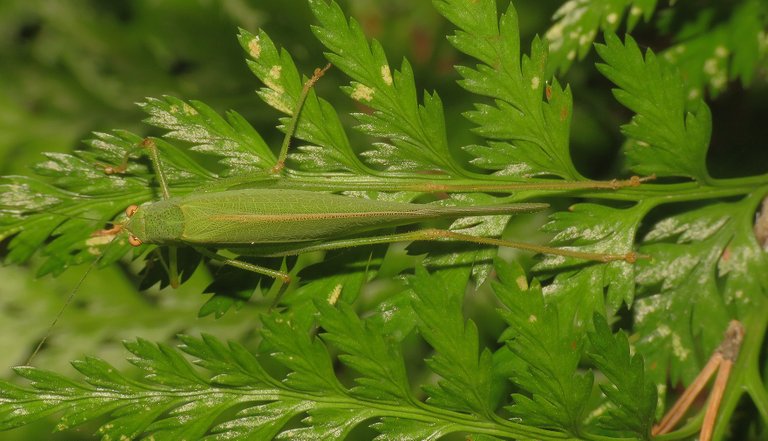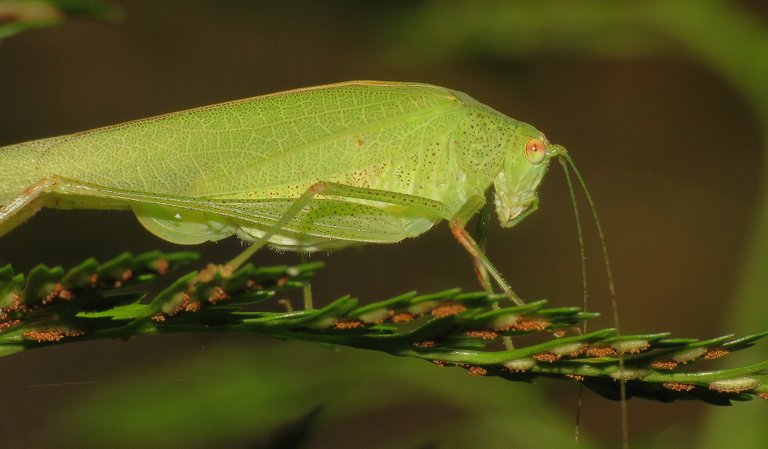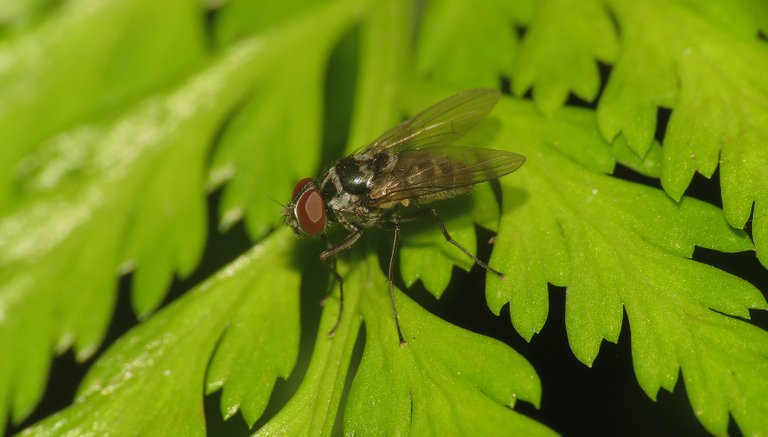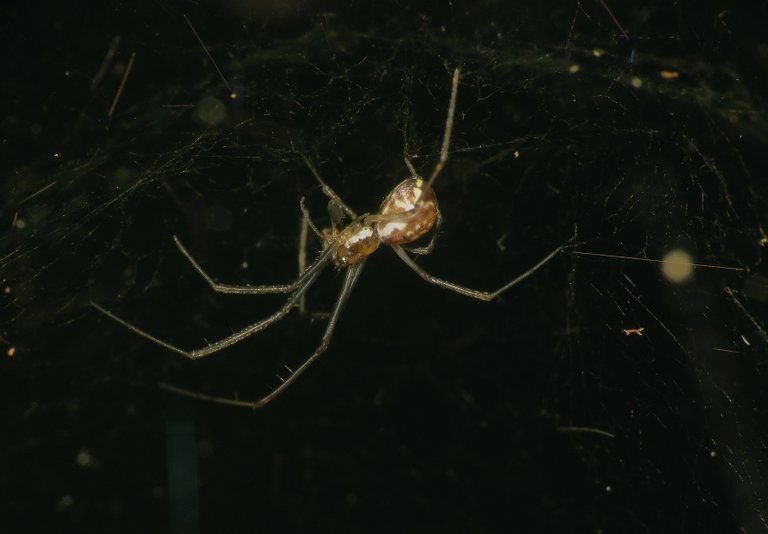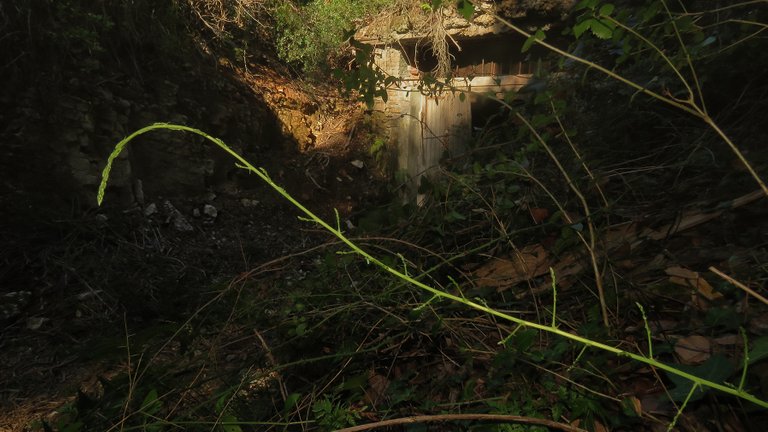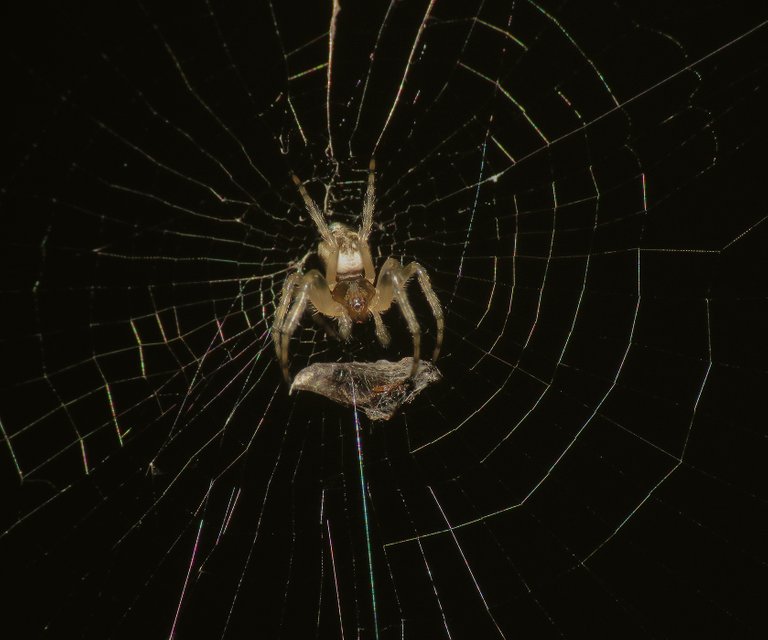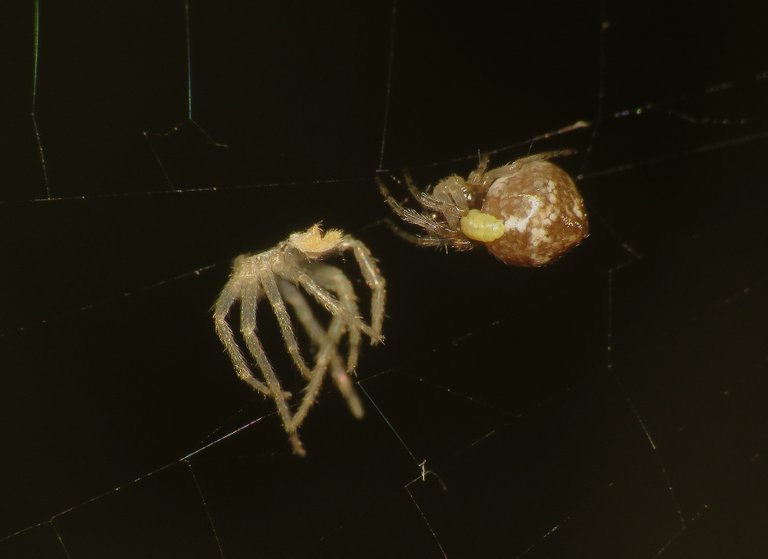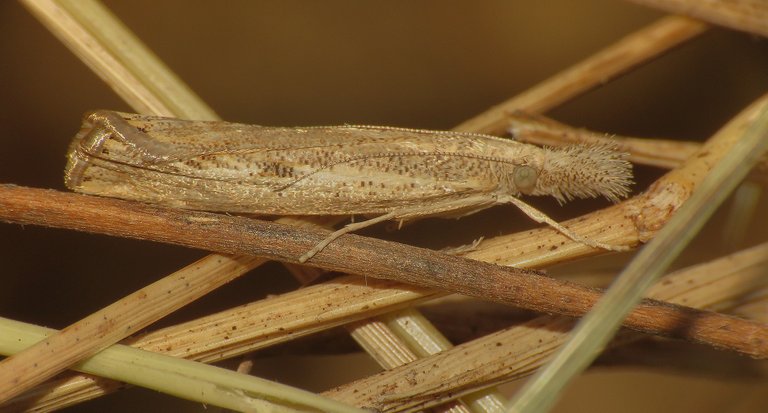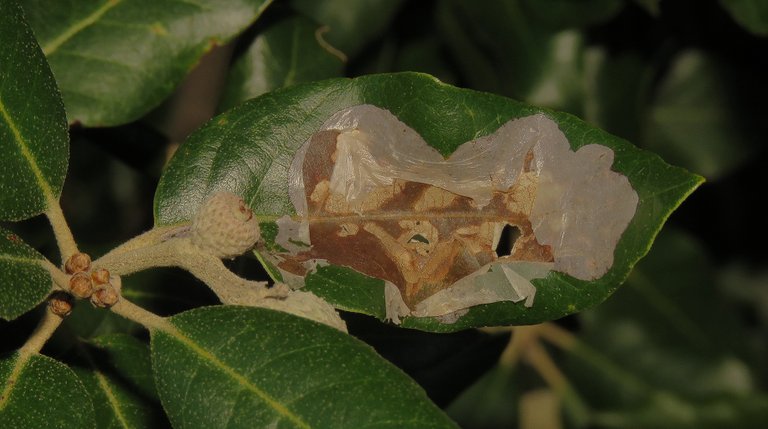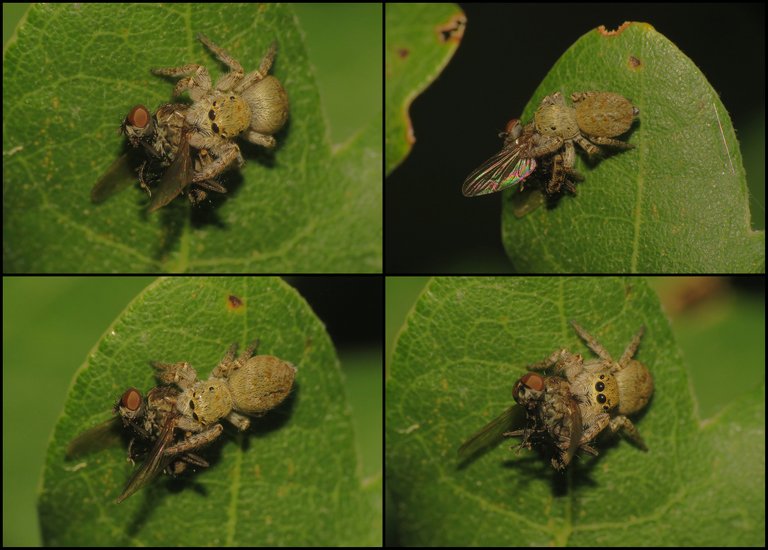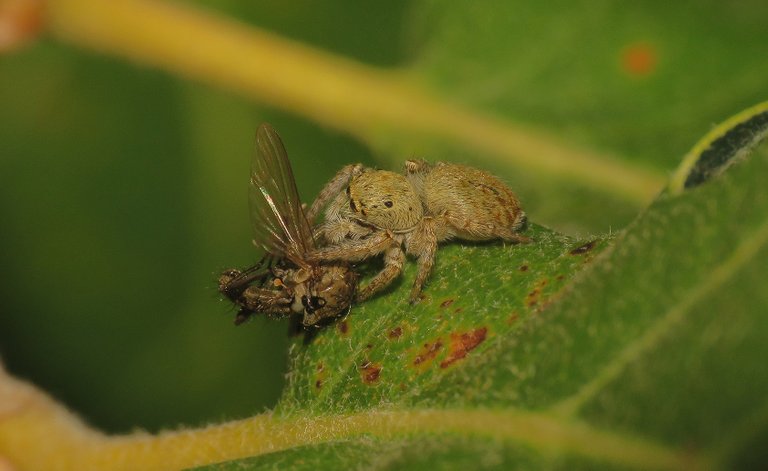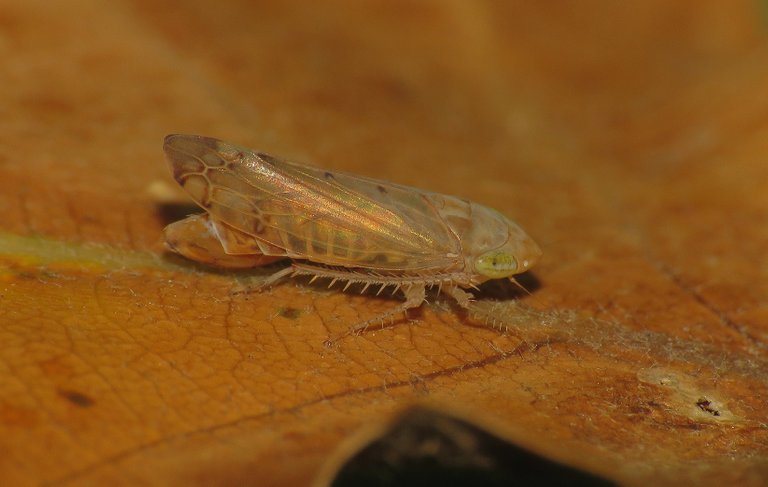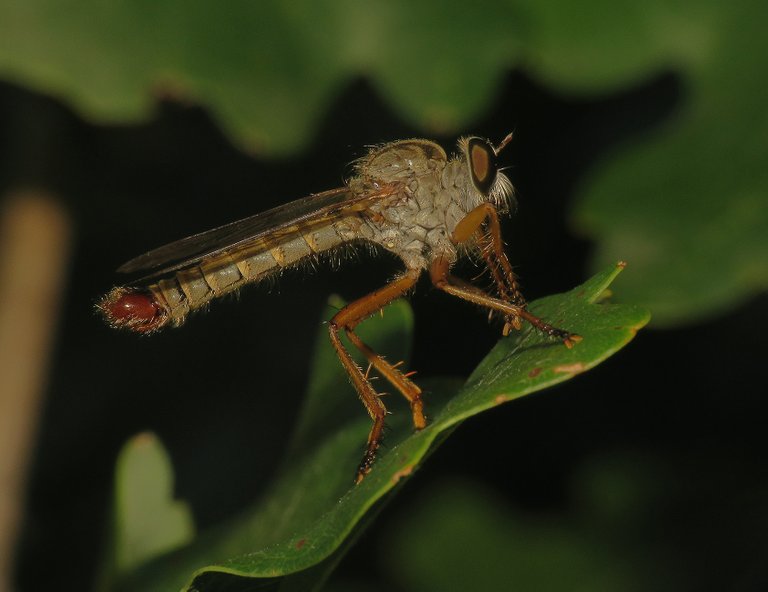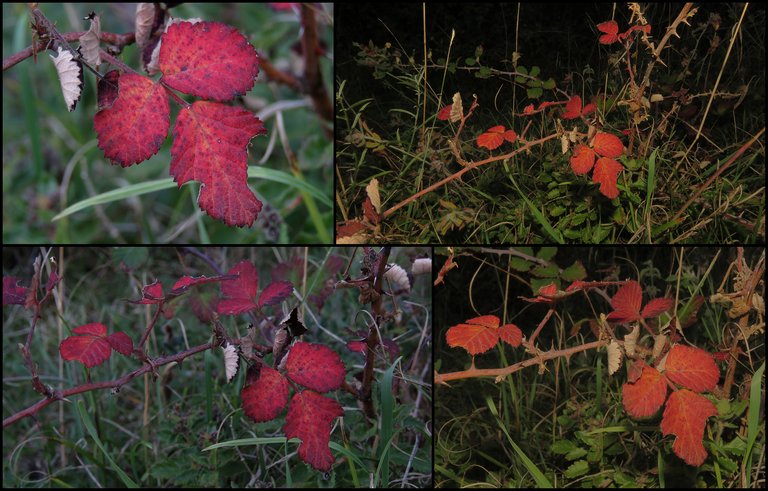The summer was near its end when these photographs were taken. I was searching for spiders and insects in the woods a kilometer or two from the sea, in the area around the village called Shishan, about six kilometers from where I live.
The atmosphere under the trees was humid and warm ...
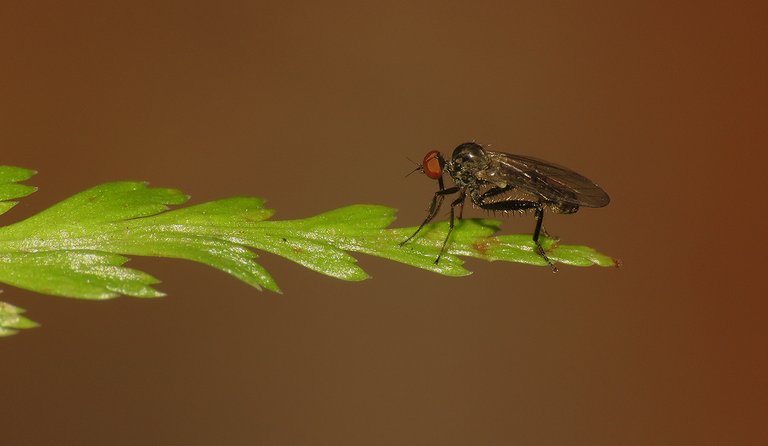
... and nature had plenty of interesting details to offer. Here you can see a fly from the Hybotidae family. I'm not sure about the species. Could be the Hybos culiciformis. The small fly was resting on the large leaf ...
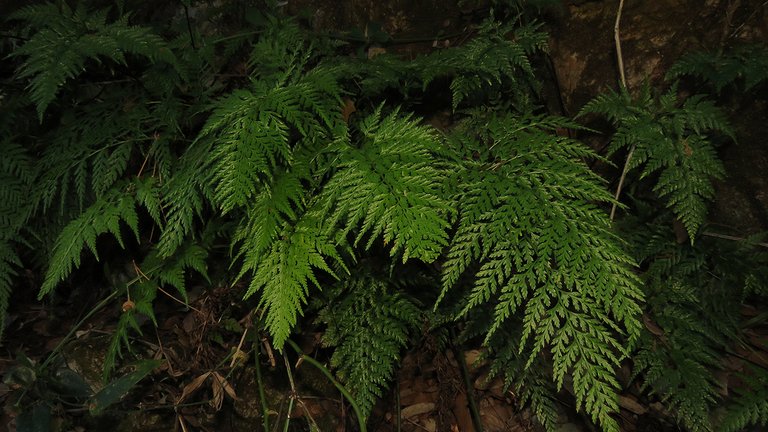
... of the Asplenium onopteris fern.
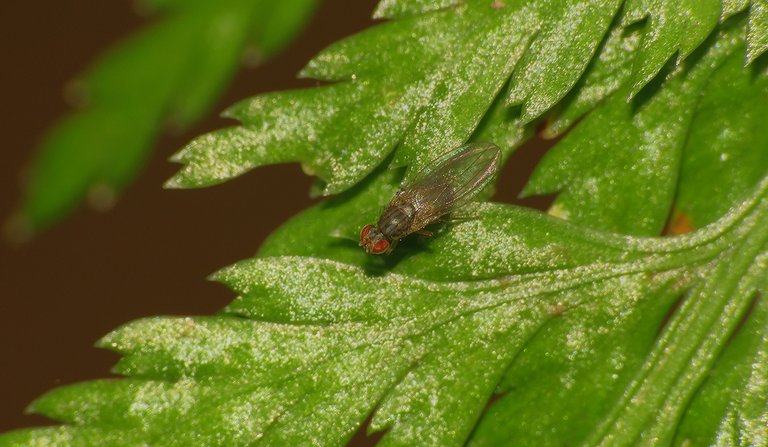
At first look, there wasn't much to see around these plants, but when my eyes got focused on very small details ...
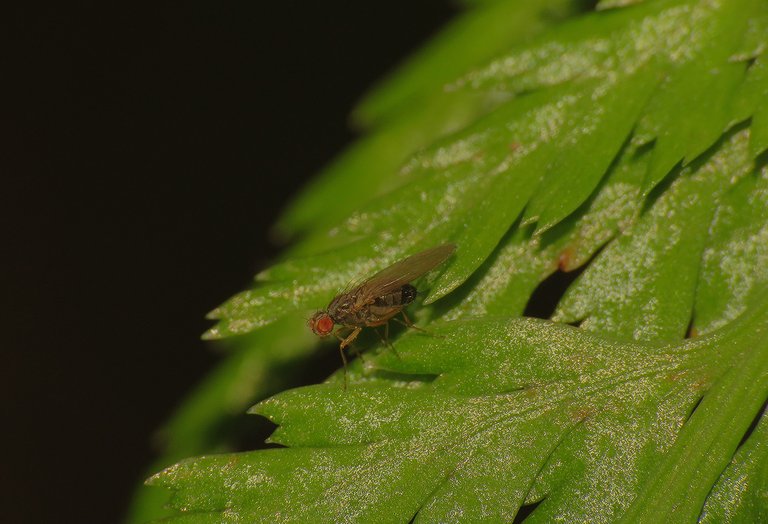
... I found quite a few insects. Here you can see another fly.
I can't tell you much about this minuscule species. It could be a member of the Lauxaniidae family, but I'm far from being sure about it. That's all I can say.
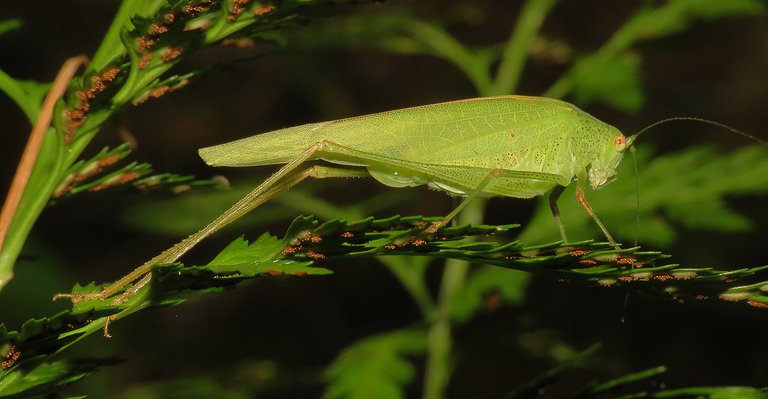
This bushcricket is a giant when compared to the fly from the previous photograph ...
... but is well camouflaged on green vegetation, so it was equally hard to notice.
Phaneroptera nana it's a very common and widespread species throughout central and southern Europe. In this enlargeable photograph, you may also notice clusters of minuscule spheres or grains on the leaf's underside. These are the spores of the fern.

Here you can see yet another fly species.
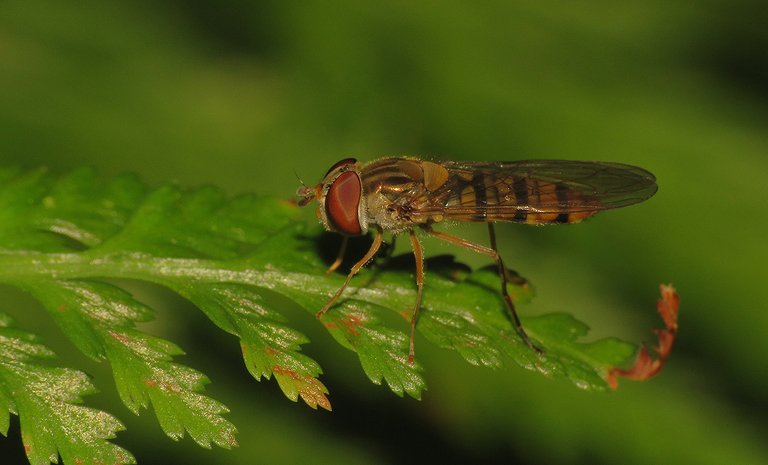
This is the Episyrphus balteatus from the Syrphidae family.
This small fly from the Sepsidae family, the Sepsis fulgens, was busy running around the leaf and communicating with its wings.
Here you can see the Anthomyia procellaris, a species from the Anthomyiidae family.

With many flies buzzing around, this is a good, shady place for spiders and their traps.
This spider looks a lot like the Linyphia triangularis. But not exactly like that species. Some small details don't match. There is a certain variability among the spiders of that same species, but still ... my intuition believes that this is some closely related species.
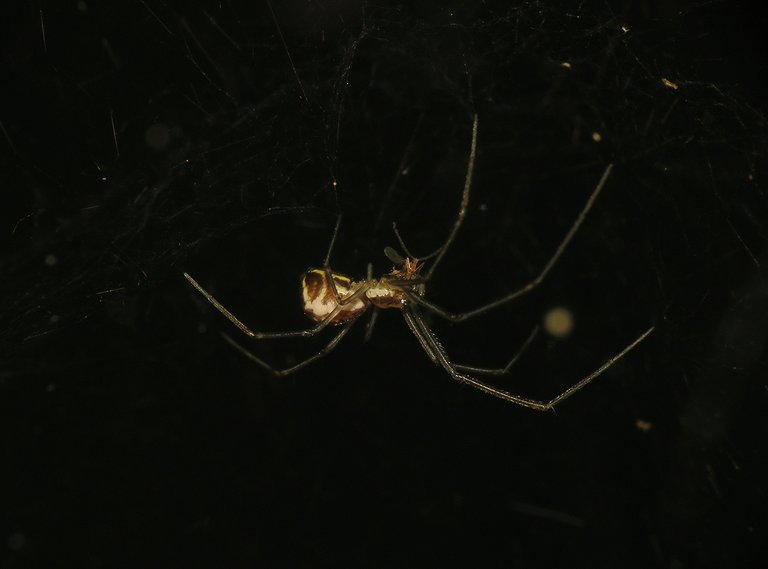
The spider in these two photographs has built a pretty large horizontal web under the leaves of the fern and is holding some minuscule insect that looks like a fungus gnat. Gnats are small, mosquito-like flies that can be usually found in humid, shady places.
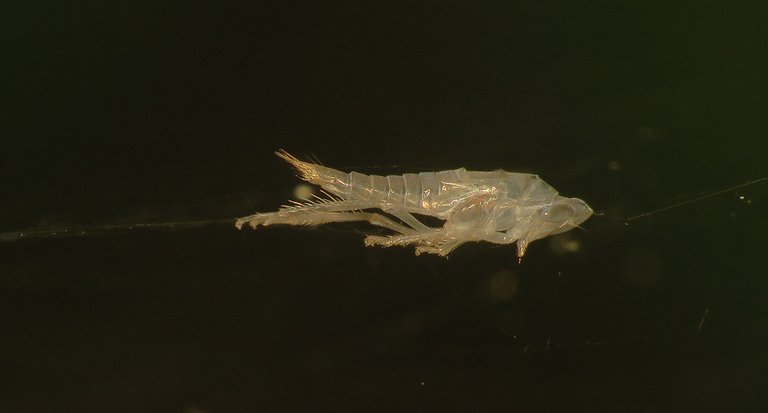
This empty exoskeleton of a leafhopper nymph ...
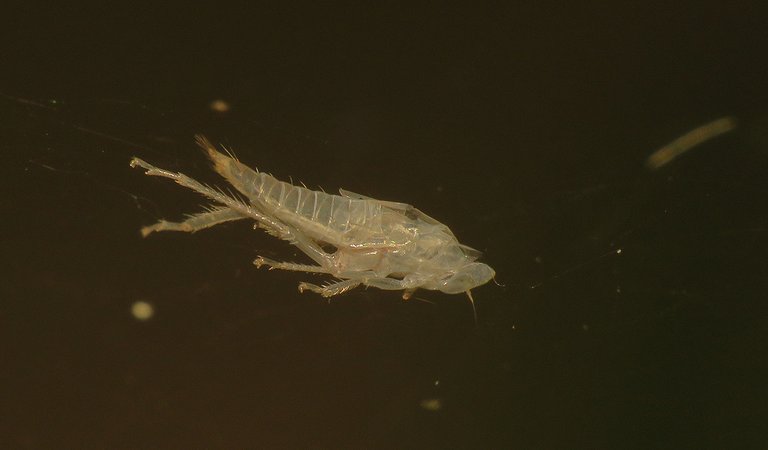
... somehow ended up attached to the threads at the edge of the web.
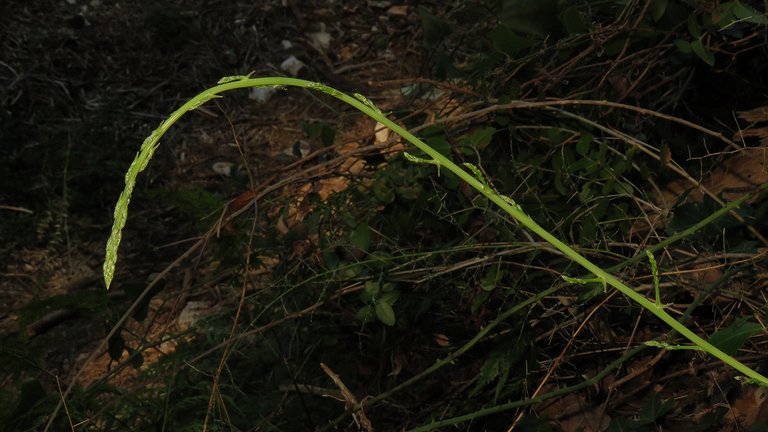
Here you can see a portrait of the fresh shoot of the Asparagus acutifolius plant. These tasty edibles usually appear only in springtime, but in some humid places in the woods can be found in autumn and summer as well. Very rarely though, and only in small numbers.
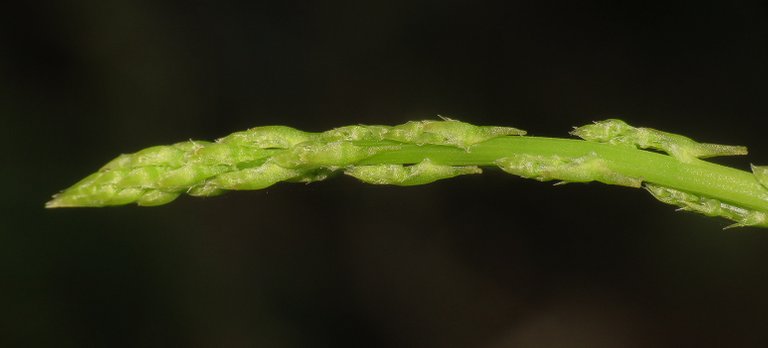
Here you can take a better, more up-close look at the same thing.
The shoot was very long and snake-like. While taking these photographs, I noticed two insects on the nearby full-grown Asparagus plant ...

... the Agalmatium bilobum planthopper ...
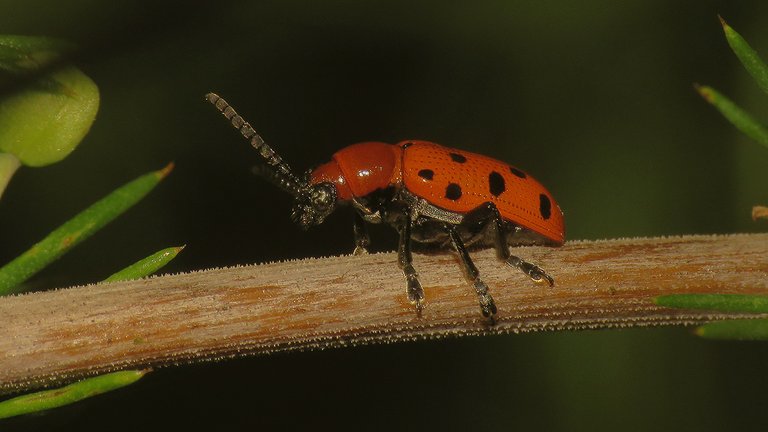
... and this colorful beetle. The spotted asparagus beetle (Crioceris duodecimpunctata)
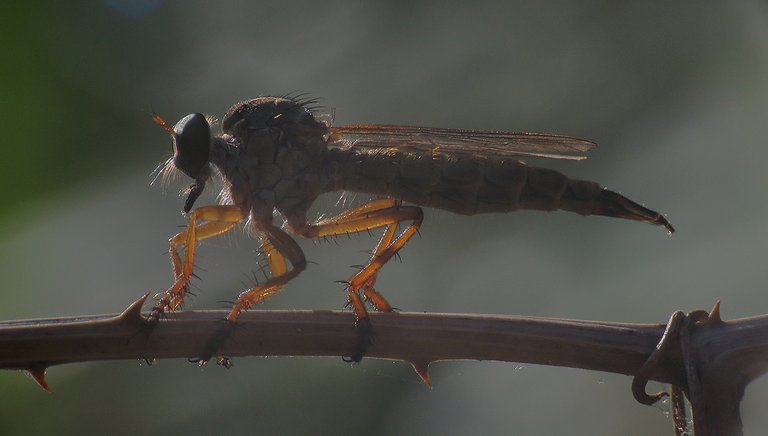
After a bit of walking, about a hundred meters or so, through the dense thorny vegetation, I encountered a fly from the Asilidae family. With quite a few almost identical-looking species around, I can't tell you which one exactly is this. Asilidae are commonly known as Robber flies.
A few meters further, deeper in the shade under the shrubs and trees, a spider has caught some small prey.
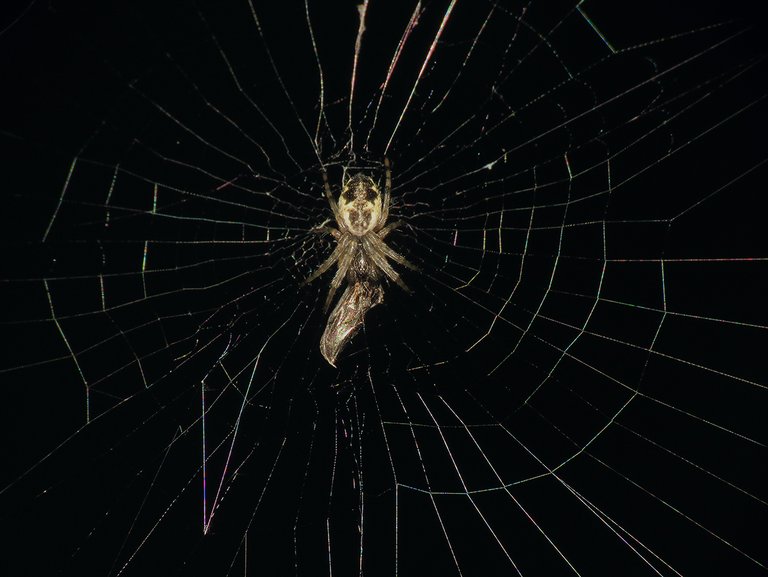
This is a species from the genus Cyclosa of the Araneidae family. Probably the Cyclosa conica. But I can't be completely sure.
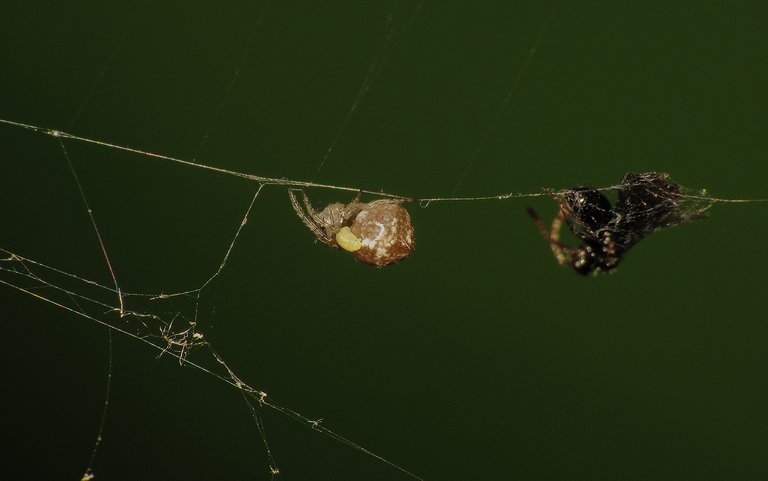
On another web not far from there ...
... I found a much smaller Cyclosa spider. Here I'm pretty sure that this is a young version of the Cyclosa conica. If you enlarge these enlargeable photographs and take a look at all the small details ...
... you'll notice some small, worm-like creature attached to the spider. This is the larva of the Reclinervellus nielseni wasp. The adult female attacks the spider, but not to kill him, the attack serves only to lay an egg on the spider's abdomen. When the larva comes out, it gets attached to the spider's thorax where it changes its behavior by excreting certain chemicals in the spider's body. The spider starts building a different web using thicker, more resilient, and less sticky threads than the one used for catching the prey. As the larva grows, it slowly consumes the spider that at the end dies. When ready for the metamorphosis the larva builds a cocoon in the middle of the web built by the spider.

This was the first time I encountered this situation in nature.
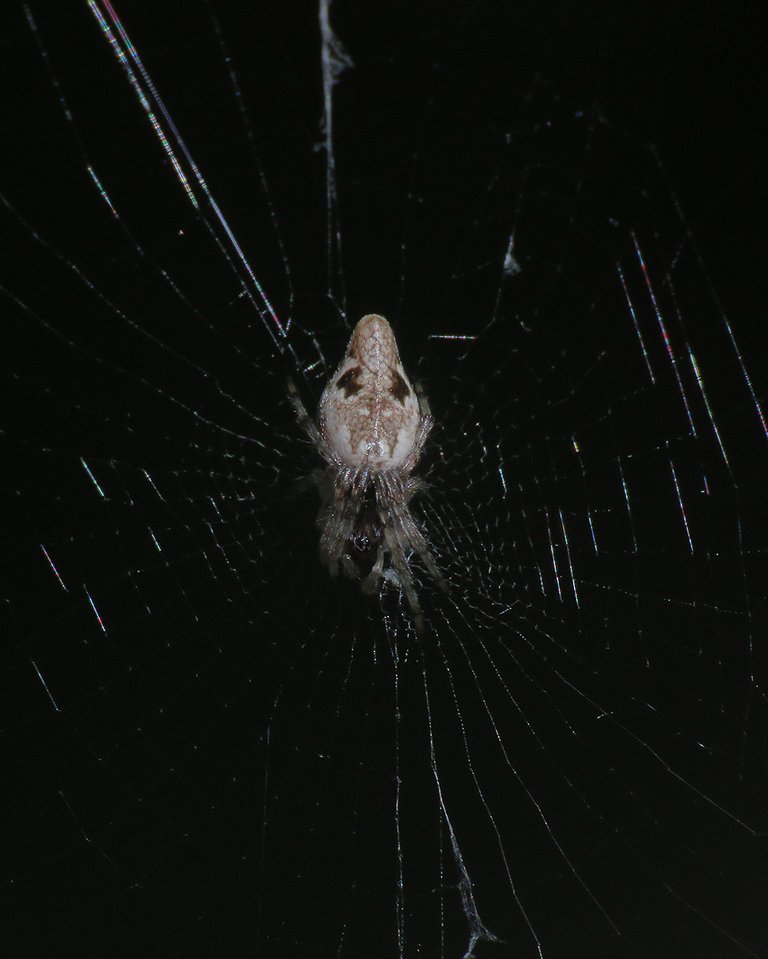
Here you can see an adult Cyclosa conica. This spider was photographed more than a hundred meters further on my walk through the forest.

This photograph was taken some time later, on the large clearance surrounded by the woods.
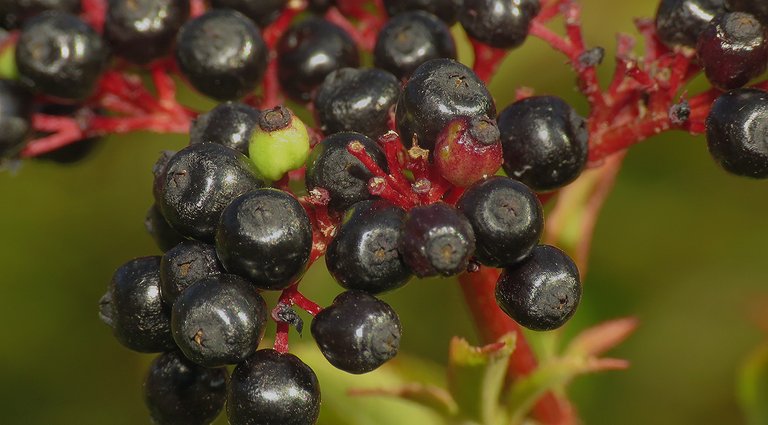
Here I came across many clusters of the small black fruits ...
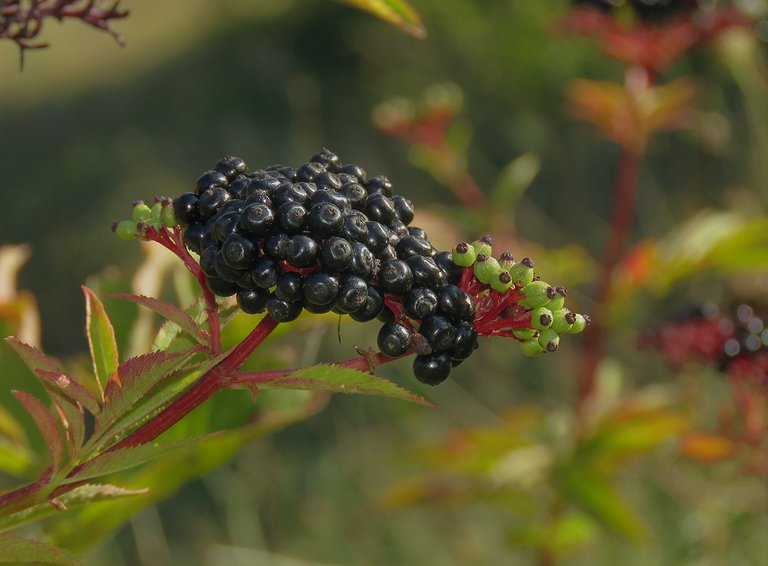
... produced by the Sambucus ebulus plant.
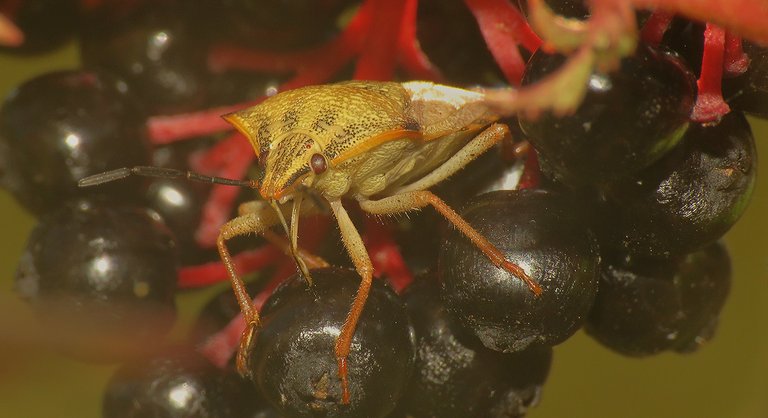
Hidden among those berries, there was a bug ...
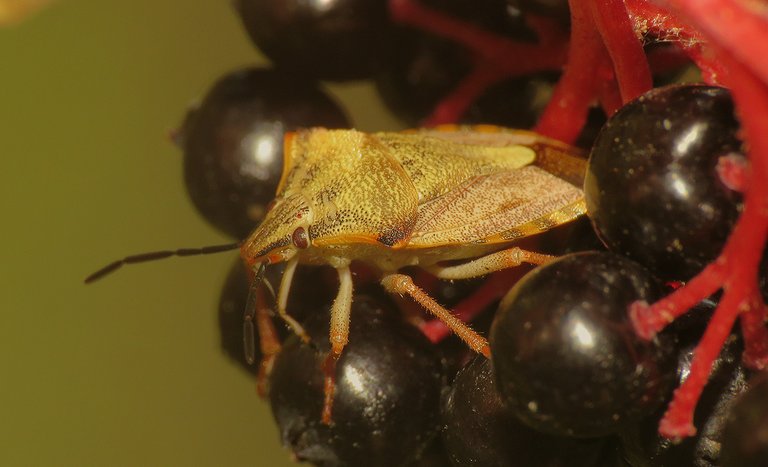
... the Carpocoris purpureipennis shield bug.
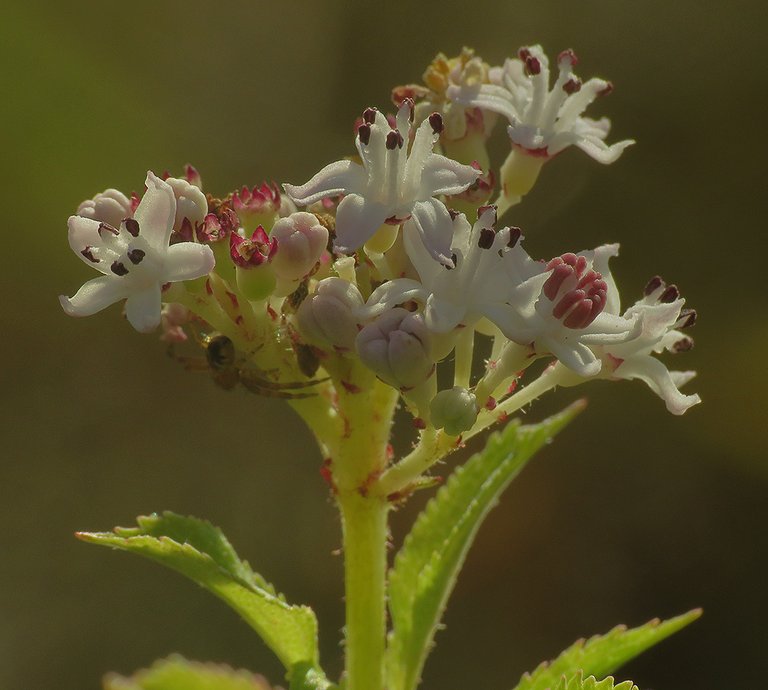
Here you can see a group of Sambucus ebulus flowers. If you take a good look at the shot, you may notice a small spider underneath the flowers. In the following photograph ...
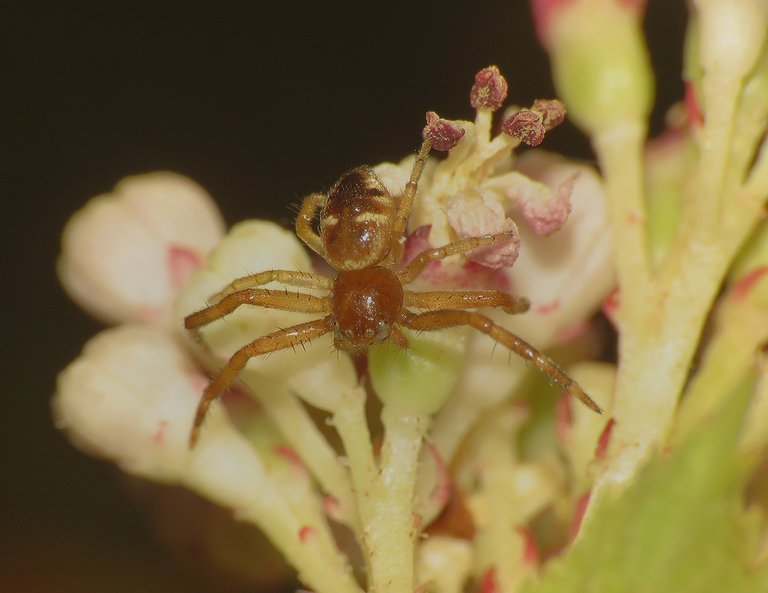
... the spider has climbed on the cluster of small flowers. This is the male Synema globosum spider from the Thomisidae family. Spiders from this family are commonly known as crab spiders. After taking a bunch of photographs ...
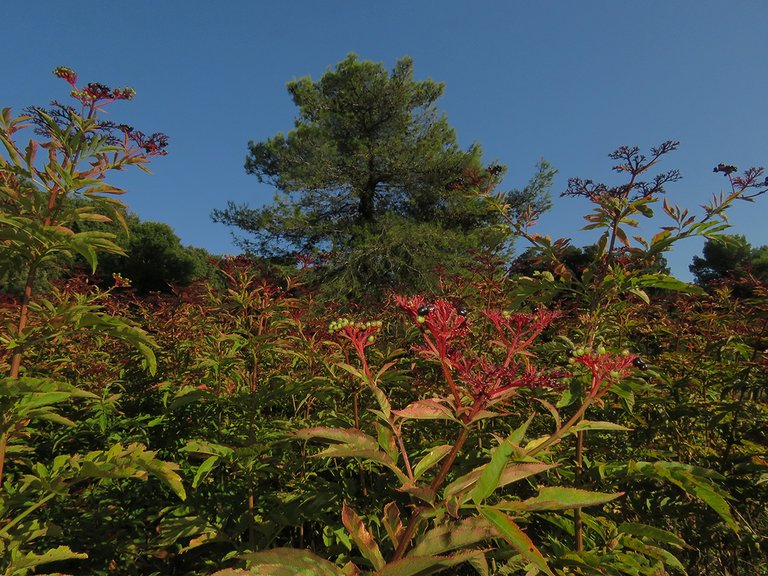
... I left the area covered with the dense growth of Sambucus ebulus plants ...
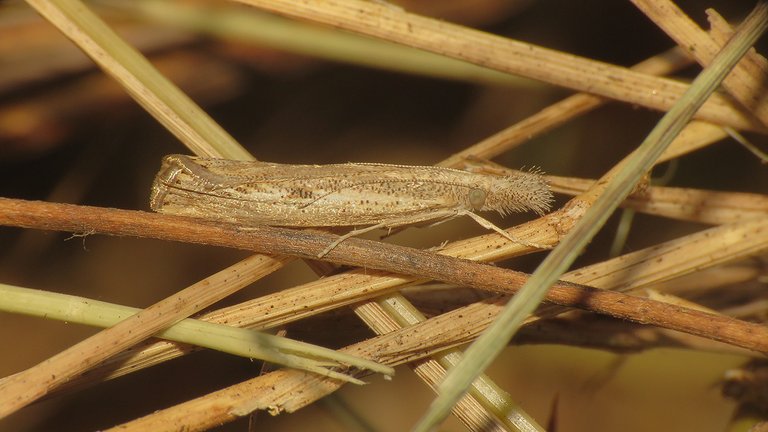
... and continued across the grass-covered meadow.
There I photographed the well-camouflaged Agriphila inquinatella moth ...
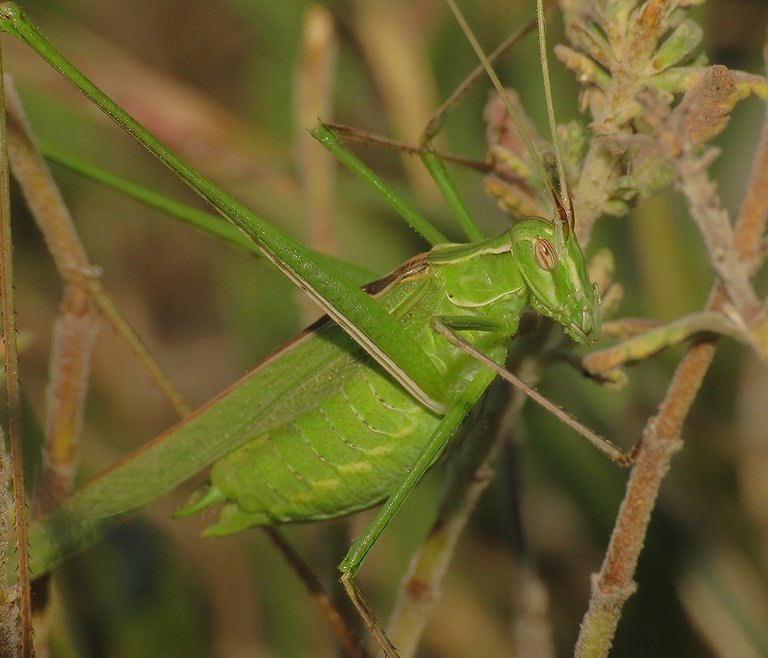
... and this elegant, green bush - cricket ...
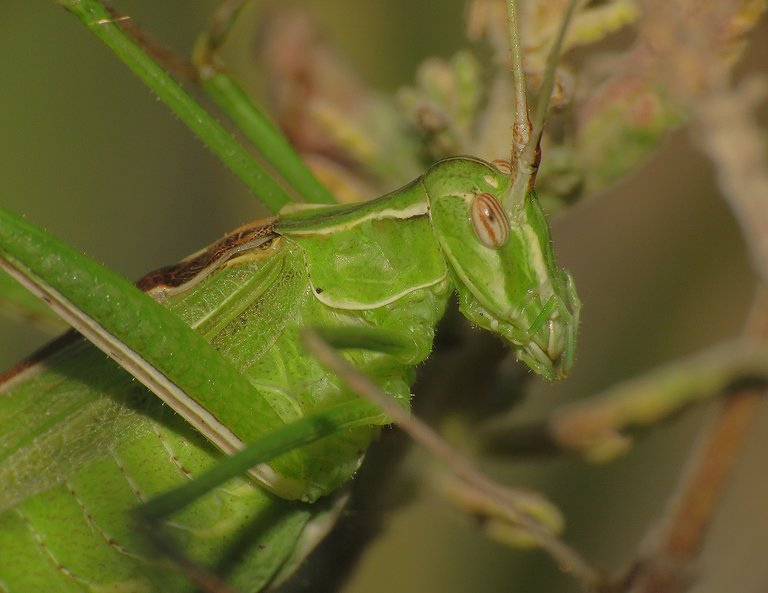
... the Tylopsis lilifolia.
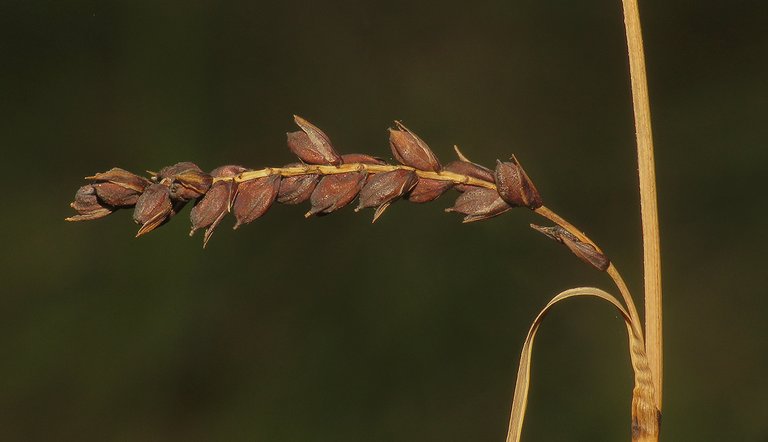
Here you can see the grains of the Carex panicea grass.
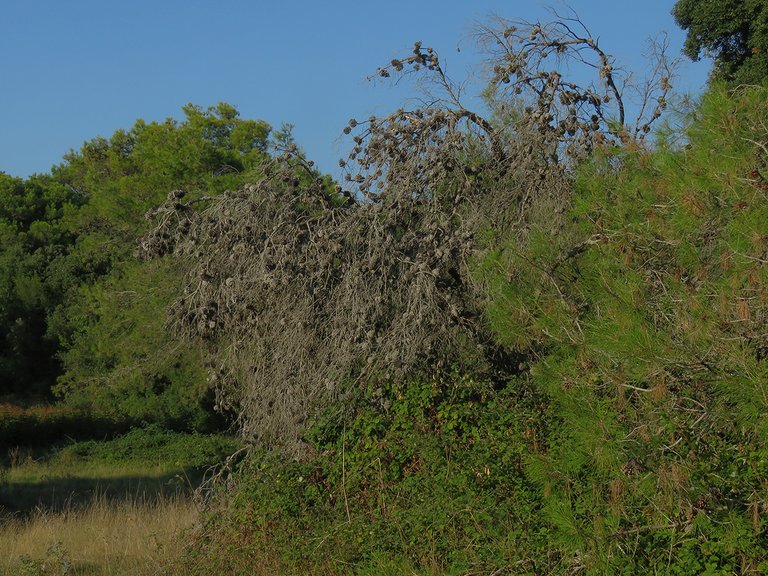
Soon I passed by a short line of old pines bordering the meadow, and then ...

... I entered the forest again.
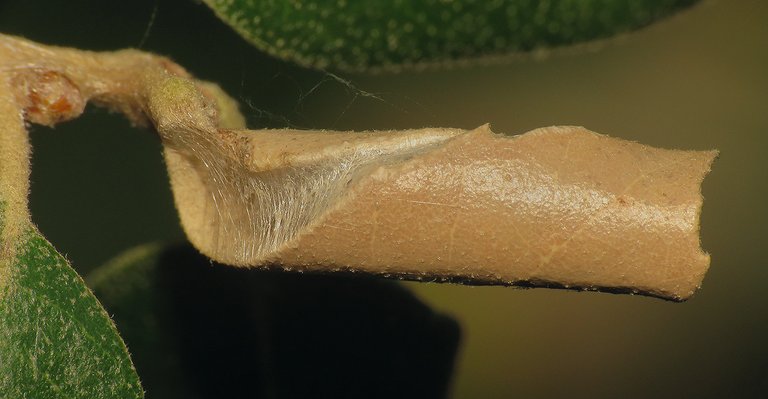
Here you can see some kind of cocoon made by rolling the leaf of the evergreen oak (Quercus ilex). I don't know which insect or spider built this interesting little shelter.
Another leaf on the same branch was decorated with artsy markings, probably made by some minuscule leaf eater.

The European stick insect (Bacillus rossius) was resting on the much larger leaf of the Quercus robur oak. In this photograph taken with the flash, the insect is clearly visible.
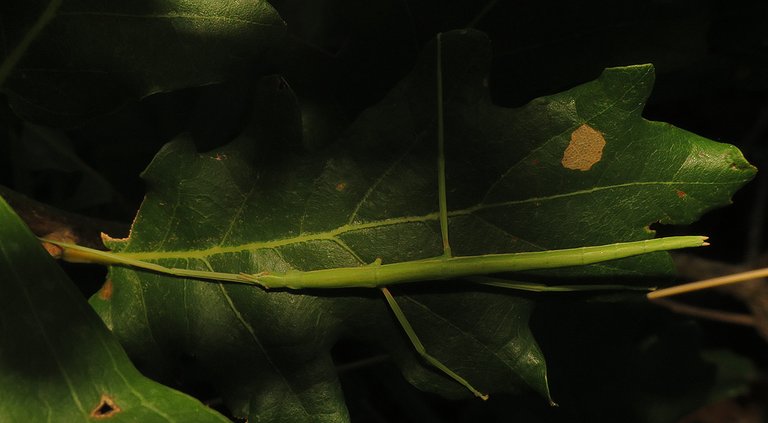
Here you can see the scene in natural light.
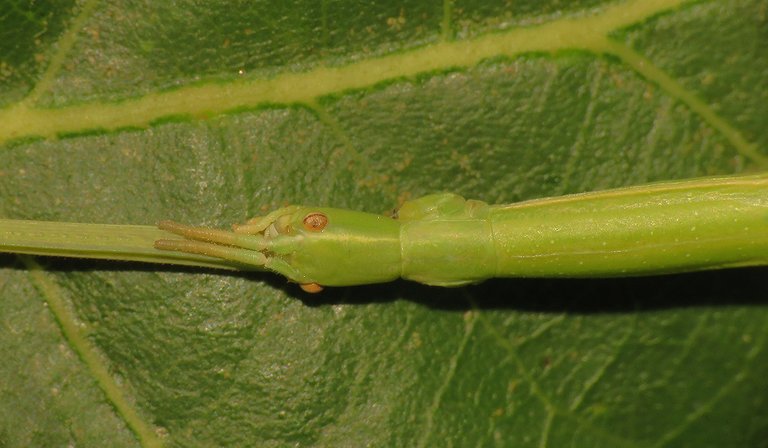
In this shot, you can take a better look at the insect's head.
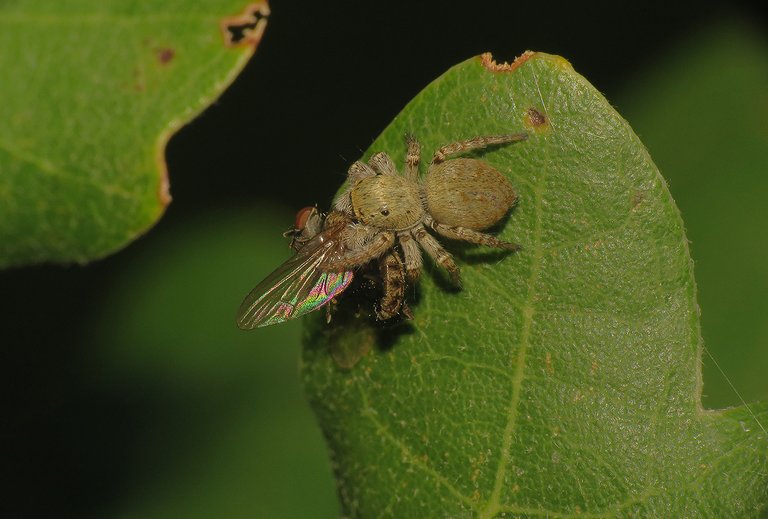
This jumping spider was photographed on another leaf, not far from there.
The small arachnid has caught a fly.
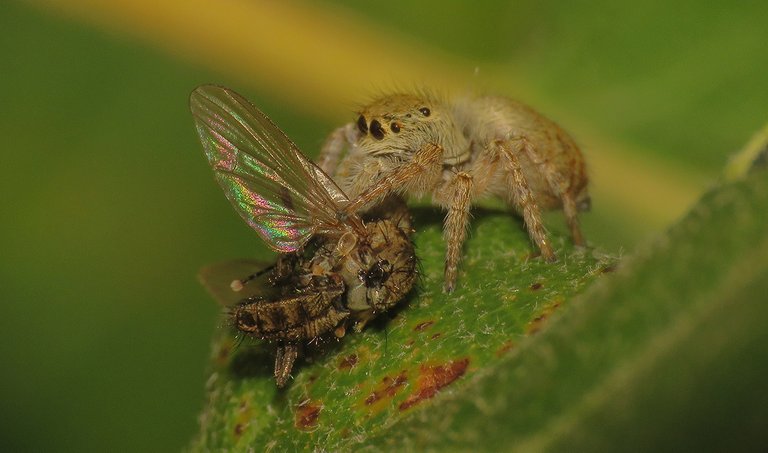
I spent at least fifteen minutes observing this scene ...
... and I took quite a few shots.
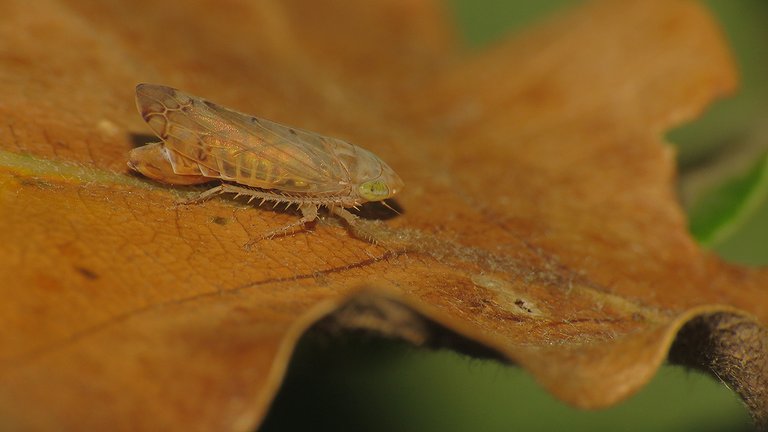
This leafhopper was camouflaged on the brown surface ...
... of a dead leaf.
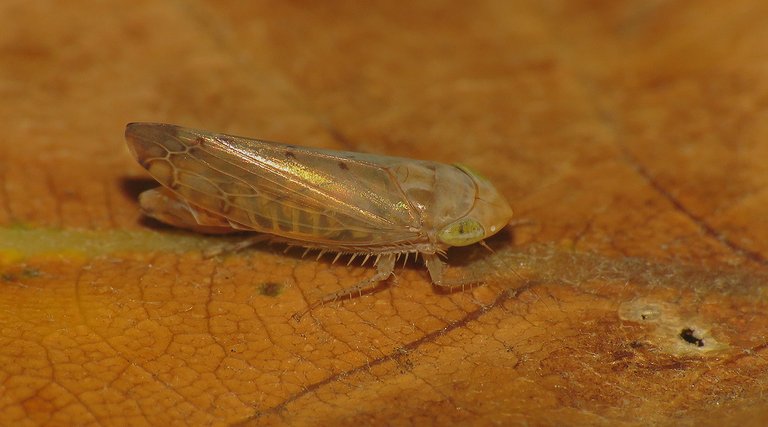
Fagocyba cruenta is the name of this species from the Cicadellidae family.
The robber fly (Asilidae family) in this photograph was resting on the green leaf not far from there.

Here you can see a colorful protuberance on the leaf of the Pistacia lentiscus tree. These galls are produced by the feeding activities of the Aploneura lentisci aphids.
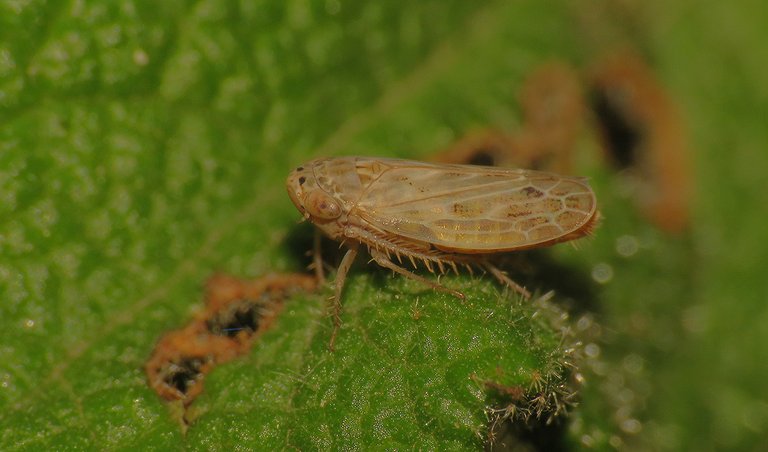
When this Conosanus obsoletus leafhopper was photographed. I just came out of the dense vegetation and stepped on the meadow.
The evening was near. I took a few more shots with these colorful leaves of the blackberry shrub and walked straight to the car parked about a kilometer from there.
AND THAT'S IT. HOPE YOU ENJOYED THE JURNEY SEEN THROUGH THE MACRO LENS MOSTLY. AS ALWAYS IN THESE POSTS ON HIVE, THE PHOTOGRAPHS ARE MY WORK - THE END.


